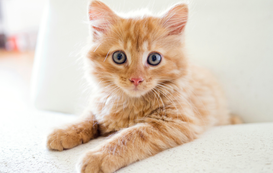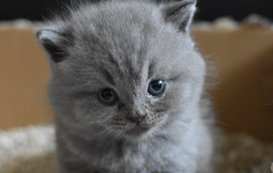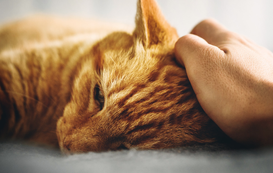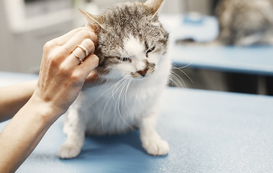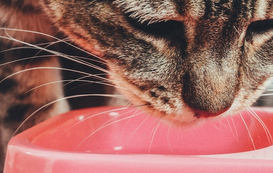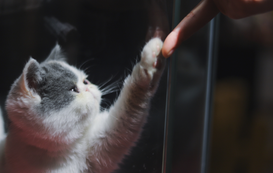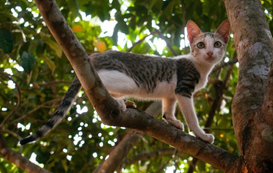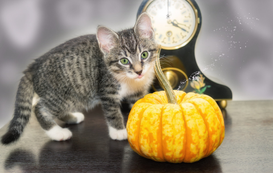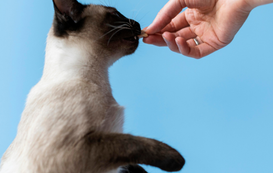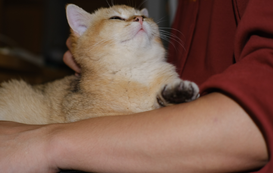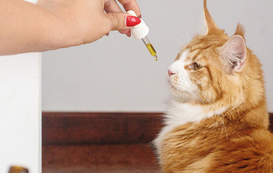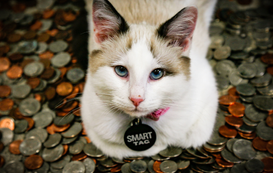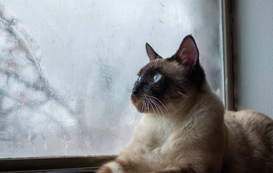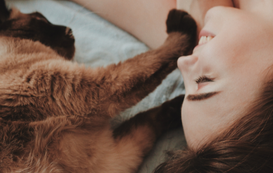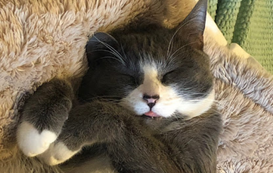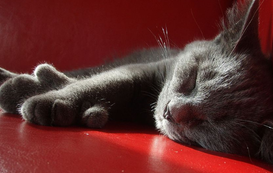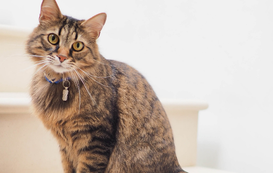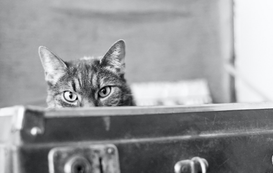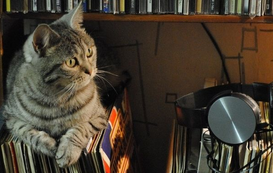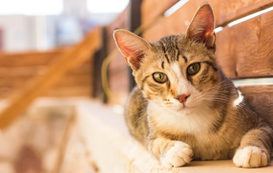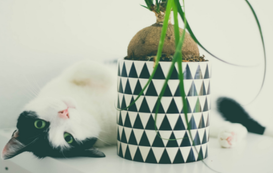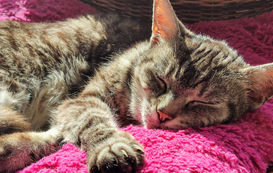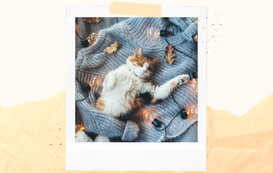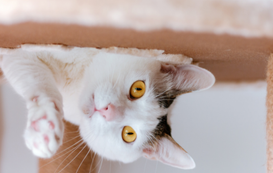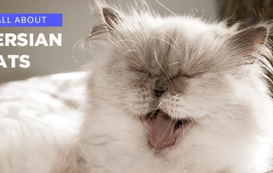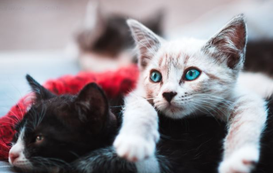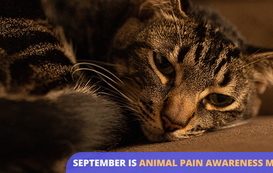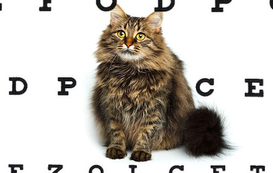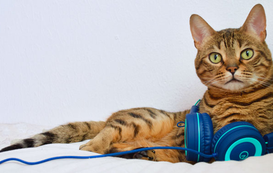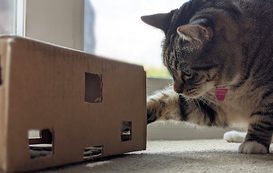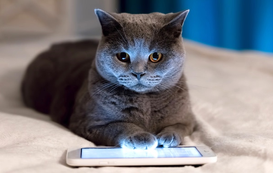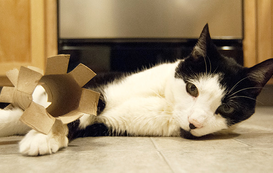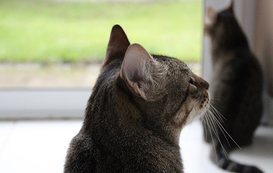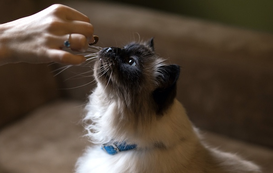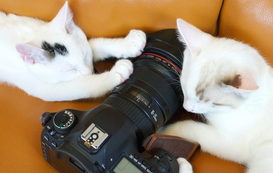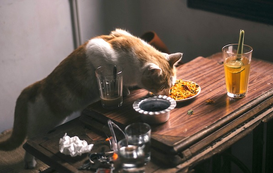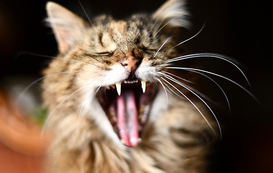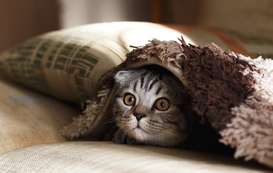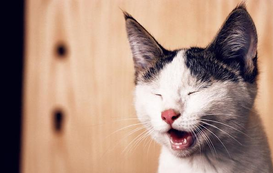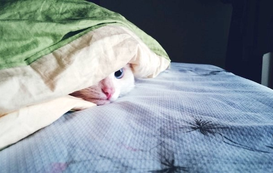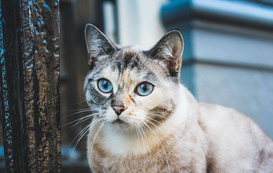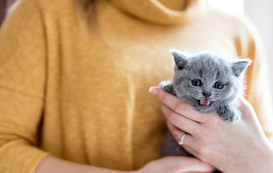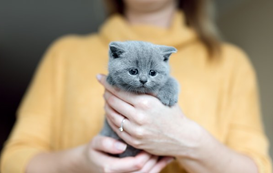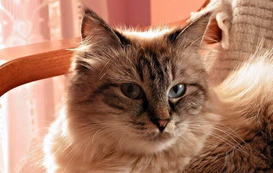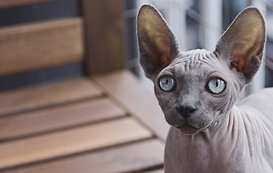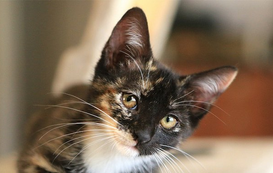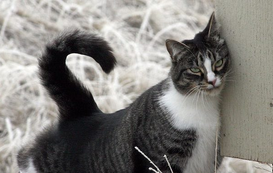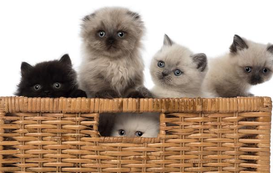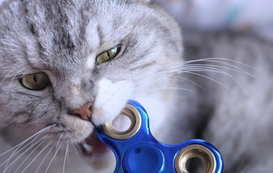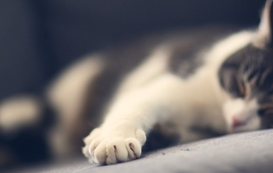Popular posts
Animal Pain Awareness Month: How to know if your cat is in pain
September is Animal Pain Awareness Month! Just like humans, our cats can experience pain on different levels. Some conditions cause acute pain, which is usually visible and easy to identify, but others can cause chronic discomfort that is often mistaken for age-related behavioral changes.
In 2015, the International Veterinary Academy of Pain Management (IVAPM), in collaboration with Zoetis, established Animal Pain Awareness Month to educate pet owners on pain management for animals and common health issues, so that our furry friends live long, happy lives. The initiative highlights the importance of observing your pet for changes as the #1 method of pain management and prevention.
One of the most agonizing situations for any cat parent is seeing your furball in discomfort and not knowing what is wrong. It’s important to educate ourselves on chronic cat diseases and to know how to recognize them. So, in honor of Animal Pain Awareness Month, let’s take a look into some of the most common diseases that can cause chronic pain in cats.
Symptoms indicating that something might be wrong
As mentioned above, chronic pain in cats isn’t usually manifested in visible or audible signs, such as crying or distressed meowing. And cats are known to be masters at hiding their pain (not to mention ignoring you when you’re craving some cuddles). This is why chronic pain often goes unnoticed or mistaken for your cat “growing up” and “getting old”.
The way to know if your cat is chronically in pain, is to observe for changes in its behavior. Be on the lookout for the following signs and schedule a vet appointment if your furball exhibits any of them.
- Decreased activity, energy or even lethargy
- Unwilling to go up or down the stairs
- Reluctance to jump onto surfaces
- Difficulty standing up after laying down
- Sudden sensitivity to touch, especially to a specific area
- Loss of appetite
- Over-grooming, especially to a specific body area
- Isolation or hiding
- Overall changes in their routine or patterns
What to do if you suspect your cat is in pain
If you’ve noticed any of the above signs, it’s essential that you schedule an appointment with your veterinarian. Only they can properly assess any medical issues your kitty might be having and prescribe appropriate treatment.
There are however a few other things to keep in mind as a cat owner when it comes to your pet’s pain management. Obviously, healthy nutrition and plenty of low-impact physical exercise should be part of your cat’s everyday life. This is the safest way to avoid a multitude of health risks. Prevention is better than cure, after all.
But of course, some diseases can’t be prevented entirely with only a healthy diet. As part of their outreach campaigns for Animal Pain Awareness Month, the International Veterinary Academy of Pain Management (IVAPM) suggests that pet owners try out some complementary pain management methods aside from traditional medication: physical rehabilitation, acupuncture, laser therapy or even therapeutic massages. Just some treatment options you might have not thought about that are definitely worth considering.
Common health issues that cause chronic pain in cats
Now that you know how to recognize if your furbaby is experiencing discomfort, let’s look at some common diseases that can cause chronic pain.
Feline Osteoarthritis (OA)
It might come as a surprise that cats can get arthritis. Not only they do, but it is extremely common in cats, especially those over the age of twelve. According to Dr. Patty Khuly, VMD, MBA, as many as 98% of elderly cats have this condition. Osteoarthritis isn’t exclusive to aging cats however: nearly 40% of all cats show signs of arthritis and even cats as young as 2 years old can suffer from it.
Osteoarthritis, as the name suggests, affects the bones and joints. “In cats, osteoarthritis usually occurs as a primary problem with no easily identifiable underlying cause, but it can also occur secondary to underlying developmental joint disease, such as hip dysplasia or subsequent to a joint injury such as an intra-articular fracture or luxation. Cats develop osteoarthritis in all their large joints, but particularly the hip, hock and elbow joint.”1
Signs to look out for:
- Reluctance to jump up or down or difficulty to do so
- Decreased activity or low mobility (playing, standing up, walking)
- Decreased grooming
- Behavior changes (hiding, withdrawn, aggression)
- Vocalization
- Sensitivity to touch
- Abnormal urination or defecation
- Decreased appetite or loss of appetite
- Hunched or tucked-up position instead of curled-up when sleeping
- Squinting
Possible treatments your vet might recommend:
- Pain Management Therapy
- Dietary changes
- Weight loss (if required)
- Physical therapy and exercise
- Environmental modification
- Surgery
Feline Idiopathic Cystitis
Simply put, feline idiopathic cystitis is an inflammation of the urinary bladder. Unfortunately, there are no identifiable causes for this condition, which makes it a diagnosis of exclusion. This means that all other possible causes have to be excluded in order to diagnose a cat with FIC. According to one study however, there is a “hypothesis that stress may be implicated in some cases of FIC”.2 Furthermore, a great number of cats with feline idiopathic cystitis have exhibited common irregularities; defective bladder lining, neurogenic inflammation, stress or abnormal stress management.
Signs to look out for:
- Dysuria (painful and/or difficult urination)
- Hematuria (bloody urine)
- Pollakiuria (frequent urination but in small amounts)
- Stranguria (straining to urinate due to blockage of the urethra)
- Periuria (urination outside the litter box)
- Overgrooming
- Changes in behavior or temperament
Possible treatments your vet might recommend:
- Stress management: identifying and eliminating potential stress factors, keeping a consistent daily routine free of surprises
- Litter box management: keeping the litter box clean at all times, changing the kind of litter sand, the location or style of the box, placing multiple litters around the house
- Increasing water consumption: introducing more water into your cat’s diet can help dilute their urine, making urination more frequent and sometimes less painful
- A rich and stimulating environment: provide lots of perches, toys and social interaction to help your cat relieve stress
- Pain and anti-anxiety medication
Cats suffering from FIC have a very good reason for eliminating outside the litter box. It’s important to remember not to punish your cat for those accidents.
Inflammatory bowel disease (IBD)
This painful syndrome is caused by chronic irritation and inflammation of a cat’s gastrointestinal tract. Kitties with this disease have difficulty processing food due to thickening of their gastrointestinal walls. “IBD can involve any part of the gastrointestinal tract, but most commonly affects the stomach and/or the intestines” says Krista Williams, BSc, DVM, Ernest Ward, DVM. Cats of all ages can be affected by IBD, but it’s most common amongst middle-aged and elderly cats.
Just like the other conditions on this list, inflammatory bowel disease can be tricky to diagnose since the signs often go unnoticed or are mistaken for other minor issues. To determine whether your purrbaby is suffering from IBD, your vet might have to perform X-rays, an abdominal ultrasound, extensive blood work and fecal examinations. For more information, read this account of dealing with IBD as a cat parent.
Signs to look out for:
- Vomiting, sometimes chronic
- Weight loss
- Diarrhea
- Bloody stools
- Lethargy
- Decreased appetite
Possible treatments your vet might recommend:
- Dietary changes
- Deworming
- Medication and/or supplements
Feline Immunodeficiency Virus (FIV)
Feline immunodeficiency virus is a type of immune deficiency. Cats with this condition may not show signs until years later. If untreated, FIV can expose your cat to a variety of painful and life-threatening infections. So, it’s crucial to keep an eye out for signs and get your furry buddy tested. While this is a dangerous condition, it’s been documented that cats infected with FIV can live normal lives, unless they are also infected with feline leukemia.
The disease is contagious and transmitted most commonly through biting. Free-roaming male cats are most prone to getting infected with FIV due to their aggressive and territorial nature. Kittens are also at high risk of contracting the virus if their mother is infected. Thankfully, house cats (indoor-only) are less likely to get it, but it is not unheard of either. To diagnose the presence of the virus, blood samples must be taken in order to detect FIV antibodies.
Signs to look out for:
- Fever, often persistent
- Poor coat condition
- Loss of appetite
- Gingivitis or stomatitis (inflammation of the gum or mouth, respectively)
- Chronic infections of the skin, eyes and/or bladder
- Constant diarrhea
- Slow and progressive weight loss
Possible treatments your vet might recommend:
Unfortunately, there is no certain cure for feline immunodeficiency virus. The good mews is that many FIV-infected cats live normal and happy lives, if the disease is properly managed. The best way to ensure your cat’s well-being when it comes to this virus is prevention and proper care.
- Your FIV-infected kitty should be neutered and confined so as to avoid transmission to other cats
- A nutritious and balanced diet goes without saying
- Be sure to take your four-legged buddy for regular check-ups; every six months at the very least is recommended
- In order to prevent the virus in healthy cats, stay on top of your furbaby’s health and keep an eye out for any abnormal changes in their behavior
Periodontal disease
Also known as gum disease, feline periodontal disease is a constellation of dental conditions that can affect the overall mouth cavity and tissue around your cat’s teeth. Most common in this category are gingivitis, periodontitis and stomatitis. Gingivitis occurs when plaque builds up on your kitty’s teeth and causes the gums to become inflamed. Sometimes the cause for gingivitis can be a number of infections (feline leukemia, kidney disease, diabetes or autoimmune disease), in which case, sores begin to form in other parts of the mouth lining; this stage is known as stomatitis. If not treated, the issue can further progress to periodontitis, which is when the tissue between the gums and teeth start to deteriorate and detach. This is a serious dental condition that unfortunately can not be reversed.
Signs to look out for:
- Swelling and redness, in severe cases, bleeding where the gums and the teeth meet
- Decreased appetite
- Head tilting while chewing
- Drooling
- Bad breath
Possible treatments your vet might recommend:
- At home teeth cleaning
- Antibiotics
- Removal of plaque and mineral build up
- Tooth extraction (in severe cases)
Regular teeth cleanings and yearly visits to the dentist are the key to preventing dental diseases in your cat.
In conclusion
Animal Pain Awareness Month is celebrated every September since it was first sponsored in 2015 by International Veterinary Academy of Pain Management (IVAPM) and Zoetis. It aims to educate owners on their pet’s health and pain management. Chronic pain especially can often go unnoticed, because it’s not expressed in extreme or distressed reactions.
To participate, make sure you schedule frequent wellness checkups for Fluffy and spread the word about Animal Pain Awareness Month on your social media! Share this blog post with your friends, or download the graphics from the dedicated International Veterinary Academy of Pain Management (IVAPM) page.
And if your furball is dealing with any kind of discomfort or chronic pain, make sure to find an experienced Meowtel sitter that can give your kitty the care he needs while you’re away!
Photo by Lucas Pezeta, Pexels







